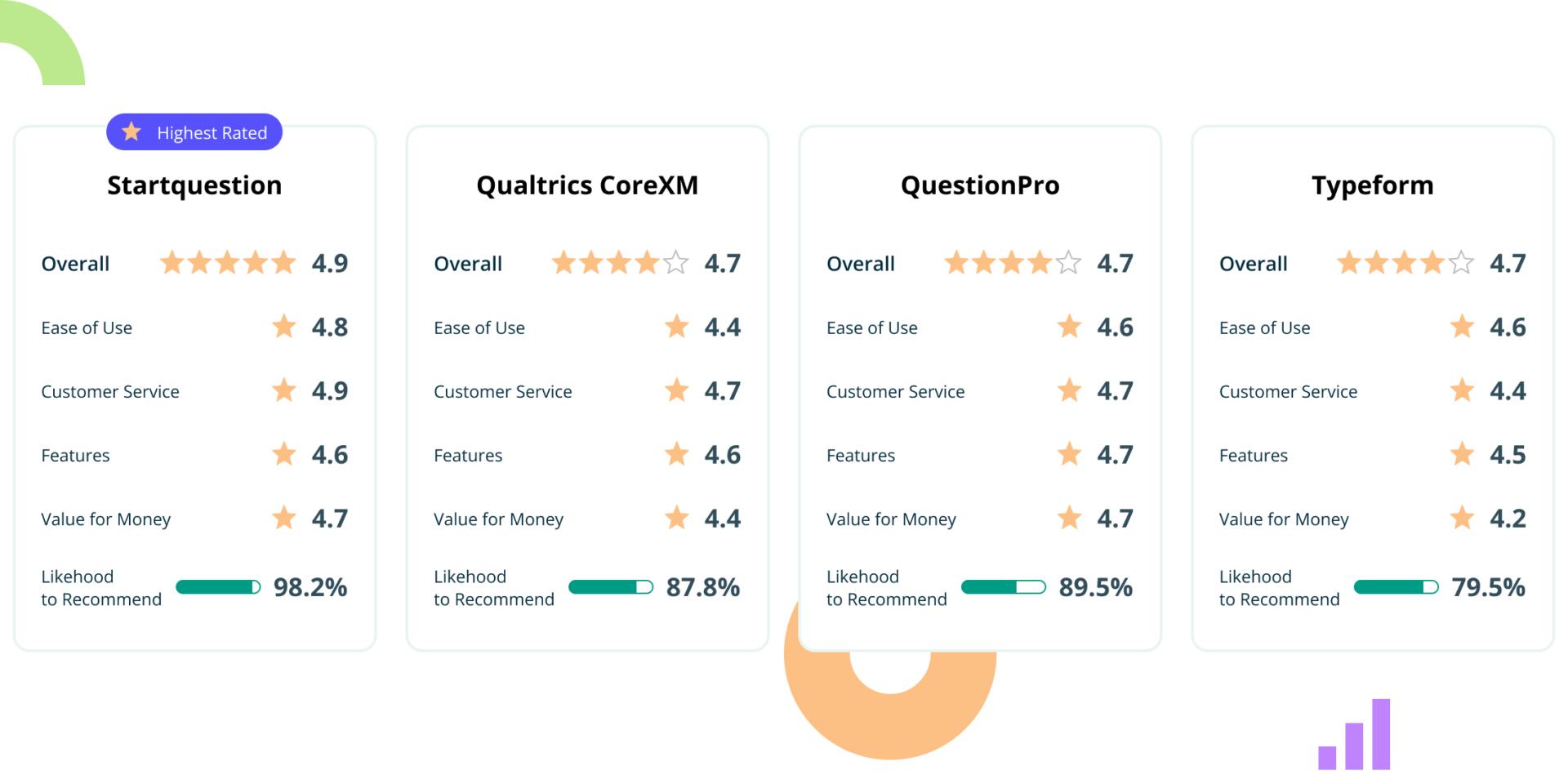In highly competitive marketplace, businesses need to understand their customers’ true feelings, needs, and preferences to thrive. This comprehensive understanding is called the Voice of the Customer (VoC). It’s more than just collecting feedback—it’s the foundation of a client-focused strategy that can drive innovation, improve customer satisfaction, and gain a competitive advantage. This article explores the deep significance of VoC and the methods that help businesses gather and act on this crucial customer insights.
Let’s start with numbers.
Recent studies emphasize the critical importance of listening to the Voice of the Customer. According to Gartner, organizations that successfully implement VoC programs can achieve a 25% increase in customer retention and revenues while experiencing a 10-15% reduction in costs. Furthermore, research by PwC indicates that 32% of all customers would stop doing business with a brand they love after just one bad experience.
These statistics highlight how vital it is for companies to actively listen to and act on customer feedback to drive satisfaction, loyalty, and overall business success.
Ok, so we understand that VoC is important. Time to learn… what is it.
NPS Survey Template
The Net Promoter Score (NPS) is a world-renowned methodology and one of the best business tools for researching customer loyalty. You will draw remarkably valuable conclusions with such simple to collect and valuable feedback.
NPS Survey Template
The Net Promoter Score (NPS) is a world-renowned methodology and one of the best business tools for researching customer loyalty. You will draw remarkably valuable conclusions with such simple to collect and valuable feedback.
What Is the Voice of the Customer (VoC)?
Understanding customer needs is crucial for businesses. Voice of the Customer (VoC) involves gathering and using feedback to improve the overall customer experience. It goes beyond just hearing what customers say; it’s about understanding their feelings to make critical business decisions.
VoC acts as a radar system for businesses, seeking feedback through surveys, social media, reviews, and observing customer behavior. Its primary goal is to bridge the gap between customer expectations and business offerings, resulting in higher satisfaction, increased loyalty, and better business performance.
How the Voice of the Customer Impacts Your Business?
The Voice of the Customer (VoC) profoundly influences every aspect of a business, from strategic planning and product development to marketing and customer service. By systematically capturing and analyzing customer feedback, companies can gain invaluable insights that drive growth, increase customer loyalty, and create a competitive advantage.
Here’s an extensive look at how VoC impacts your business:
- Enhanced Customer Satisfaction and Loyalty
VoC helps identify common issues and pain points that customers face. Addressing these issues proactively can lead to a smoother and more enjoyable customer experience. Consistently meeting or exceeding customer expectations builds trust. Satisfied customers are more likely to become loyal advocates for the brand, leading to repeat business and positive word-of-mouth referrals.
- Informed Decision-Making
VoC provides a wealth of data that can inform business decisions. Whether it’s direct feedback on a new product feature or suggestions for service improvements, these insights enable informed, evidence-based decision-making. What is more, businesses can prioritize initiatives that align with customer needs and market demands.
- Product and Service Innovation
Regular feedback loops enable continuous improvement of existing products and services. Iterative enhancements based on valuable insights ensure that offerings remain relevant and competitive. Engaging customers in the development process through VoC initiatives can lead to co-created products and services that are more likely to succeed in the market.
- Improved Customer Experience (CX)
VoC data can help businesses personalize the customer experience. Understanding individual preferences allows for tailored interactions, which can enhance overall satisfaction. By mapping out the customer journey and identifying friction points, businesses can streamline processes to make interactions more efficient and enjoyable.
- Competitive Advantage
Companies that actively listen to and act on the Voice of the Customer can differentiate themselves in the market. A reputation for excellent customer experience can be a significant competitive advantage. Additionally, businesses that developed VoC program, can respond more quickly to market changes.
- Operational Efficiency
When employees see that their efforts to gather and act on customer feedback lead to tangible improvements, it can boost morale and engagement. Engaged employees are more likely to deliver exceptional service.
Customer Effort Score Survey
Satisfied customers are likelier to remain loyal and promote your brand through word-of-mouth. Many businesses turn to metrics like the Customer Effort Score (CES) to gauge customer satisfaction effectively.
Customer Effort Score Survey
Satisfied customers are likelier to remain loyal and promote your brand through word-of-mouth. Many businesses turn to metrics like the Customer Effort Score (CES) to gauge customer satisfaction effectively.
VoC Methodology
The Voice of the Customer methodologies include different approaches for gathering and analyzing customer feedback. Each method provides valuable insights and can help develop a thorough understanding of customer needs and preferences.
Below, I outline several vital methodologies used in VoC programs.
Periodical Customer Interviews
Regular customer interviews are scheduled to discuss customers’ experiences with a company’s products or services. These interviews are usually one-on-one, either in person, over the phone, or via video call.
Goal: The main aim is to obtain detailed feedback from customers, understand their problems and needs, and determine their overall satisfaction.
Process: In these interactive interviews, open-ended questions are used to get detailed answers. The interviewer can ask more questions based on the customer’s answers to find out more.
Benefits: This method gives detailed feedback, showing specific problems and finding ways to improve that might need clarification by just using numbers.
CX Surveys
Customer experience surveys help gather facts about what customers like and dislike, as well as what they prefer. Using the voice of the customer tools, you can gather data on customer satisfaction and preferences.
Goal: VoC surveys like NPS (Net Promoter Score), CSAT (Customer Satisfaction Score), or CES (Customer Effort Score) aim to collect customer feedback and create data that can be analyzed to identify trends and patterns.
Process: CX questionnaires can be done through email, web forms, phone calls, QR codes, or in-app messages. They include different types of questions to gather specific both negative and positive feedback.
Benefits: They are effective for a large customer program base, enabling you to quickly gather information and measure satisfaction levels, identify common issues, and track changes over time.
Social Media Listening
Listening on social media platforms means keeping track of what customers say about a brand.
Goal: The aim is to stay connected and responsive by getting real-time insights and feelings from customer conversations and mentions on platforms like Twitter, Facebook, Instagram, and LinkedIn.
Process: Tools and software are used to find mentions, hashtags, and keywords related to the brand. This information is then studied to understand customers’ feelings and spot recurring themes.
Benefits: Social media listening gives immediate, real-world feedback from a diverse focus groups. It can show new issues and trends and lets companies talk directly with customers in a public way.
Online Customer Reviews
Customers share their experiences with products and services in online reviews on websites and e-commerce platforms.
Goal: Gather honest public opinions from customers to identify areas for improvement and showcase strengths.
Process: Businesses can monitor and analyze reviews from websites like Yelp, Google Reviews, Amazon, and industry-specific platforms. They can use sentiment analysis tools to categorize and prioritize feedback.
Benefits: Online reviews provide a wealth of information from a diverse user base. They offer insights into customer satisfaction and pain points, which can influence potential customers and help businesses enhance their offerings.
Behaviour on Website
Tracking customer behavior on a website involves monitoring how users interact with the site, including their navigation patterns, time spent on pages, and actions taken.
Goal: To gain insights into how customers utilize the website, pinpoint any obstacles in the user journey, and enhance the online experience.
Process: Tools like Google Analytics, heatmaps, and session recording software track user activities and provide data on clicks, scrolls, and navigation paths.
Benefits: This approach offers quantitative data on user behavior, enabling businesses to optimize website design, content, and functionality to meet customer needs better and drive conversions.
Customer Success and Sales Teams
Seamless customer service experience is a must for your business. Support and sales teams are frontline employees interacting directly with clients and collecting customer feedback through their engagements.
Goal: Leverage the insights and experiences of customer-facing teams to understand customer needs, concerns, and satisfaction levels.
Process: Regular debriefs, feedback sessions, and CRM system entries allow these teams to share the information they gather while interacting with customers.
Benefits: These teams have firsthand knowledge of customer issues and successes. Their insights can help identify immediate areas for improvement (customer pain points) and inform strategic decisions.
Customer Satisfaction Survey
Customer satisfaction is the cornerstone of any successful business. Happy customers are more likely to remain loyal, refer others, and ultimately drive growth.
Customer Satisfaction Survey
Customer satisfaction is the cornerstone of any successful business. Happy customers are more likely to remain loyal, refer others, and ultimately drive growth.
Voice of the Customer Questions Examples
Each question in the Voice of the Customer (VoC) survey is designed to collect specific insights about the customer’s experiences, perceptions, and expectations. You will find detailed explanations for each question to help you better understand the VoC:
How likely are you to buy from us again in the future?
This question measures the customer’s likelihood of repeat purchase and is often framed as a Net Promoter Score (NPS) question on a scale of 0 to 10. It shows how loyal customers really are.
How it helps:
- It gauges customer loyalty and predicts future buying behavior.
- High likelihood scores indicate strong customer retention potential, while low scores can highlight at-risk customers.
- Unhappy customers can provide actionable feedback on what needs improvement to win back their trust.
How would you describe your most recent interaction with our customer service team?
This open-ended question encourages customers to share details about their most recent customer service experience.
How it helps:
- Provides insights into the quality and effectiveness of customer service interactions.
- Highlights specific issues or frustrations customers encountered, allowing businesses to address and rectify them.
- Identifies positive aspects of customer service that can be reinforced and used as best practices.
What’s one word or phrase that best encapsulates your feelings about our brand?
This question seeks a succinct, impactful word or phrase that captures the overall customer satisfaction and perception of the brand.
How it helps:
- Offers a quick snapshot of the brand’s image from the customer’s perspective.
- Reveals the emotional connection customers have with the brand, which is crucial for brand loyalty.
- By aggregating responses, businesses can identify common themes and sentiments associated with their brand.
What prompted you to choose our product/service over others?
This question explores why the customer decides to select a particular product or service over competitors.
How it helps:
- Identifies the key factors that differentiate the product or service in the marketplace.
- Reveals what aspects (e.g., price, quality, features) are most important to customers when making purchase decisions.
- Provides valuable information for marketing and positioning strategies to highlight the features that matter most to customers.
Are there any additional services or products you wish we offered?
This open-ended question encourages customers to suggest new products or services they want. What does this mean to you? Adapting your offerings to market requirements.
How it helps:
- Identifies potential areas for product or service innovation based on actual customer needs and desires.
- Ensures that new offerings are aligned with customer expectations, increasing the likelihood of success.
- Highlights unmet needs in the market that the company can address to gain a competitive edge.

Tool to Conduct Customer Satisfaction Surveys
Customer survey software such as Typeform, Startquestion, or Qualtrics is pivotal in understanding and responding to the Voice of the Customer (VoC). These tools streamline collecting, analyzing, and acting on customer feedback, making it easier for businesses to stay attuned to their customers’ needs and preferences.
Here’s how Startquestion and similar survey software can enhance your VoC efforts:
Efficient Feedback Collection
The voice of the customer software enables businesses to create and distribute surveys quickly and efficiently across various channels, such as email, social media, and websites.
Advanced Data Analysis
Each pro survey software provides robust analytical tools to process and interpret VoC data, turning raw feedback into actionable insights. Additionally, Startquestion offers Insightomat, an app that allows you to automate analyzing text data and open statements to understand customer sentiment. The application accelerates qualitative analysis of textual feedback and optimizes text analytics.
Enhanced Customer Engagement
Survey tools facilitate continuous customer engagement through follow-up surveys, feedback loops, and integration with other communication tools.
Integration with Business Systems
Our survey software integrates seamlessly with other business tools like CRM systems and customer support platforms, ensuring unified data and enabling automated workflows. This integration enhances decision-making and ensures all departments can access customer insights.
Actionable Insights and Reporting
The VoC tools’ reporting features help transform collected data into clear, actionable insights that can be shared across the organization. Custom dashboards and visualization tools make data accessible and easy to understand.
Compliance and Data Security
Trustworthy survey software ensures customer survey data collection and storage comply with privacy regulations like GDPR, building customer trust and protecting sensitive information.
And much more.
So, are you ready to listen to your customers’ voices?




